Upgrading the SSD in Chromebook & MyDigitalSSD Super Boot Drive M.2 2242 SSD Review
by Kristian Vättö on October 21, 2014 8:00 AM ESTThe Upgrade
Upgrading the storage in the Acer C720 Chromebook is surprisingly easy. While Chrome OS does not give the user full system access, there is an integrated (albeit hidden) tool for creating recovery media that can be used to clone the old drive. To open the tool, all you need to do is to open Chrome (i.e. the web browser) and type "chrome://imageburner" to the address bar. Once you have done that, you should see the following:
To create the recovery media, you need either a USB drive or an SD card (minimum 4GB). The tool will not just clone your existing drive but will in fact download the OS again, which in my case was a 498MB download. The downloaded file is then extracted to the USB drive to create the bootable recovery media.
Alternatively, you can also create the recovery media using another computer. Google offers a tool for both Windows and OS X, which can be found here along with the instructions. I tried this as well on my Mac Pro and did not encounter any issues.
After successfully creating the recovery media, you can begin the actual upgrade, which starts by removing the 13 screws on the bottom of the laptop.
Note that at least in the case of the Acer C720, the warranty is (in theory) void if you remove the back cover. That is unfortunate, but on the other hand Chromebooks have not been designed to be user upgradeable.
This is what the internals of the C720 look like. The SSD is located on the right-hand side right above the speaker, so upgrading it does not involve any further disassembly.
The C720 ships with a 16GB Kingston SSD that is held in place by a single screw. Simply remove the screw and the SSD will come out of its socket.
The Kingston SSD is also Phison S9 based and has a single 16GB NAND package with Kingston markings on it. I apologize for the unclear package markings – the label left residue on the packages, which made the markings practically invisible. Anyway, Kingston has not published any NAND data sheets so the markings would not give us many details in the first place. I would make an educated guess that the NAND package has two 64Gbit dies in it from either Micron or Toshiba.
Installing the new SSD is as easy as removing the old one and the assembly process also follows the same instructions as the disassembly, just in the opposite order.
With the new SSD installed, you need to boot with the USB drive or SD card attached for the recovery process to start. Otherwise you will be presented a message that says no OS found and asks you to insert the recovery media or create one using another computer.
The recovery process itself only takes about 15 minutes, so the whole upgrade process should take around half an hour or so. Once the recovery process is complete, the system will be ready for use. The nice thing about Chrome OS is that because it is cloud based, signing in to your Google account will basically restore all settings that you had in place previously, so you can continue from where you were before the upgrade.


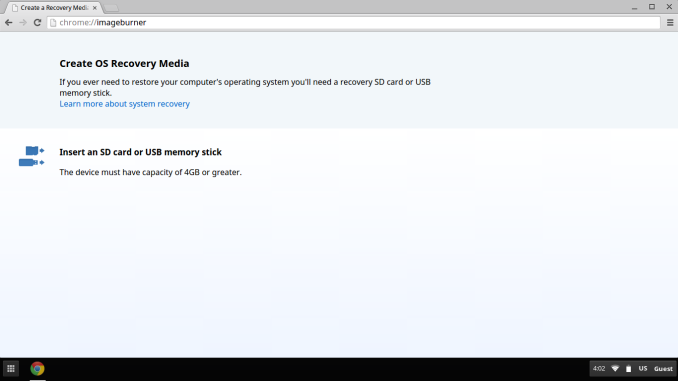

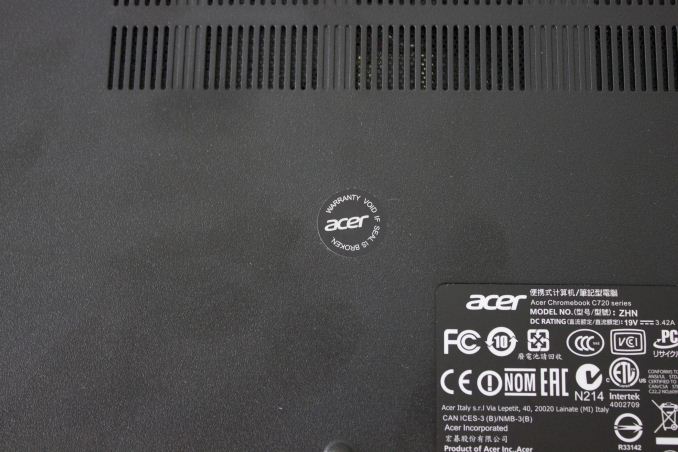
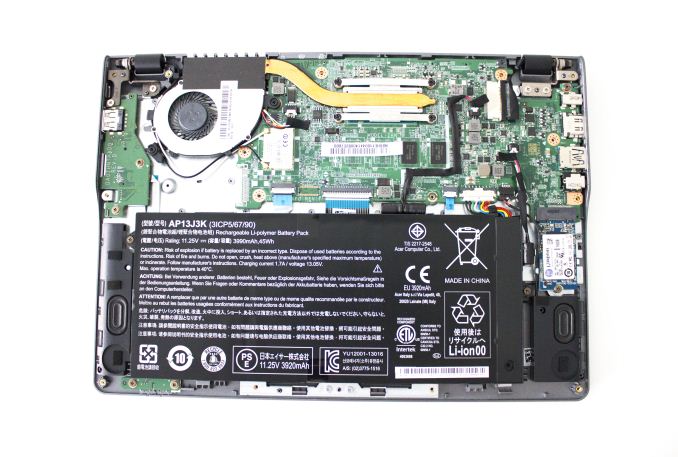
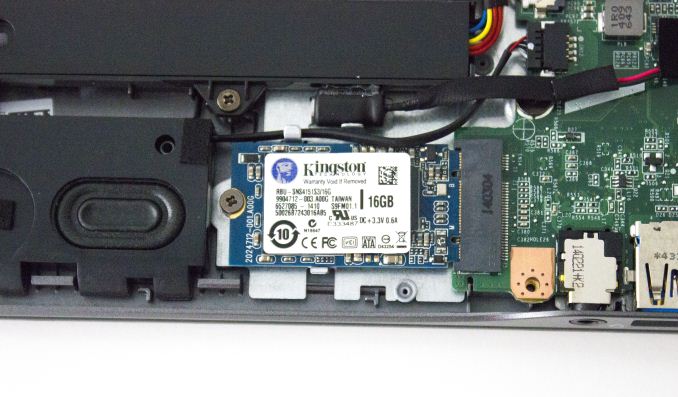
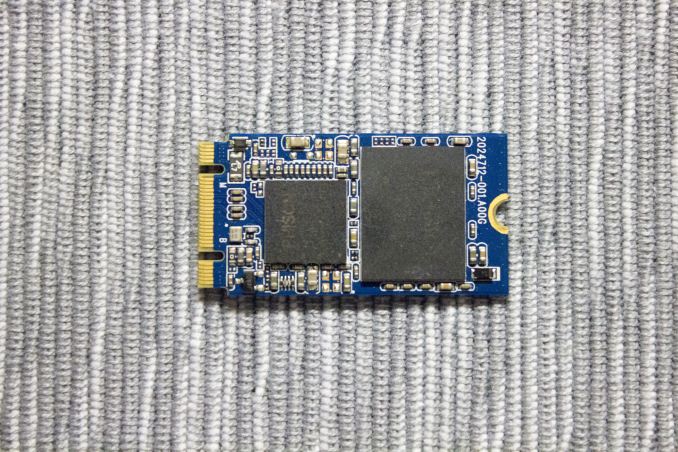
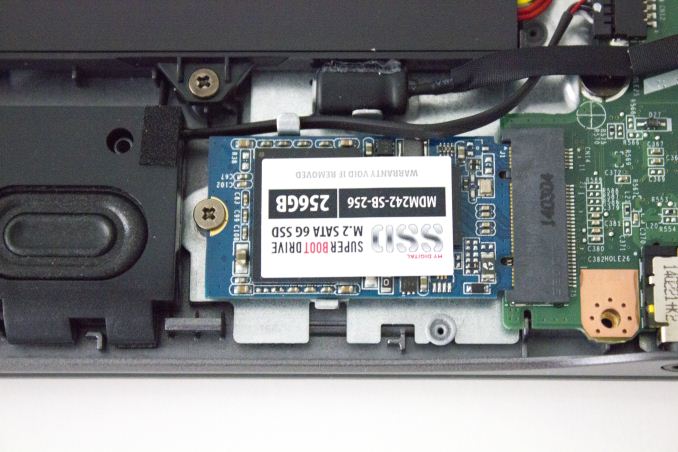








67 Comments
View All Comments
abianand - Thursday, October 23, 2014 - link
Thank you...very stupid of me posing a question without reading the article fully. First time I've done that.Spending around 75-80 for an ssd upgrade negatively affects the value proposition of the chromebook, which in the first place is questionable (to my purpose)
AnnonymousCoward - Thursday, October 23, 2014 - link
5 pages talk about performance, yet there's no inkling on actual user performance. You say "the performance difference is tremendous" - back that up with boot time or app launch time! Just looking at synthetics is idiotic.Realtime power consumption is less meaningful than total power consumed for some task. Faster transfer rates use more power while it's transferring but operate for less time.
cutterjohn - Saturday, November 1, 2014 - link
Also remember AMD is AWFUL wrt power usage.I recently bought a C720/i3/4GB version and replaced the shipped SSD w/128GB my digital -> ~100GB available. I suspect that part of the SSD space is walled of for OS reasons as there is a factory restore(in Android parlance) option which means a clean copy is stored somewhere, probably on it's own partition, and part of the space is probably also saved as misc space(I forget what they call it for SSDs, spare?).
Anyways ATM I've also croutonized it w/ xfce/Ubuntu 14.04, there's also croagh which supports more distros, e.g. ARCH, and chrubuntu which just replaces chrome os IIRC(wasn't ready to do that and probably won't*.)
* I used chrome os exclusively for a few days(waiting for SSD delivery) and it was quite fast and power efficient, regularly giving me ~8h of runtime. It was able to play netflix & amazon instant video OOB, but I haven't tried again since dev moding it and croutonizing it. (I've seen comments that dev mode removes netflix streaming capability, but they were old.)
Even with chroot Ubuntu/xfce it's pretty quick. A fair number of steam games are available for it, and I've just recently installed wine, but have not gotten around to trying out and windows apps/games yet although there are some videos of even skyrim(low settings although the videographer claims medium does OK as well) running on a celery chromebook.
Personally, I'd like an even smaller chromebook, more in the original netbook form factor, in which case 1280x720 or the existing 1366x768 would be quite dense although cramping the keyboard. I mainly picked it up for size and batt runtime as even my Sager 7330 is a bit bulky at times(13") and batt runtime is usually only ~3h. I also wouldn't have minded an i5 option as well and slotted RAM...
omegajimes - Tuesday, November 4, 2014 - link
Do people actually use Chromebooks with ChromeOS? I thought the only reason to pick these up were to load lightweight linux distros like Mint or Elementary on them.leoku - Wednesday, November 5, 2014 - link
I think the Commodore C64 all-in-one in the great grandpa's era is more fun than these netbooks and chromebooks, plus you can program it right out of the box. A Commodore C64 is more expensive than Chromebook nowadays, though.leoku - Wednesday, November 5, 2014 - link
Given the fact, I think the SSD upgrade for a Chromebook is a waste of money.dareo - Sunday, November 30, 2014 - link
I’ve just ordered a Lenovo S540 and it comes with a 1 TB HDD (5400 rpm) + a 16 GB M.2 SSD for caching. This leads to several questions related to the MyDigitalSSD 128GB Super Boot Drive:1. Could I swap out the 16 GB M.2 that comes with the Lenovo, replace it with the MyDigitalSSD 128GB Super Boot Drive, install the OS and apps on it and use it as the primary boot drive?
2. What’s the difference between the MyDigitalSSD 128GB Super Boot Drive and the MyDigitalSSD SC2 Super Cache 2 42mm SATA III 6G M.2 NGFF M2 SSD Solid State Drive?
3. How reliable is this M.2 SSD in comparison to a Crucial MX100 or a Samsung EVO?
4. Would it just make more sense to pluck the M.2 and HHD from the computer and install a 500 GB Crucial MX100 or a Samsung EVO?
Thanks in advance for any feedback / advice on this.